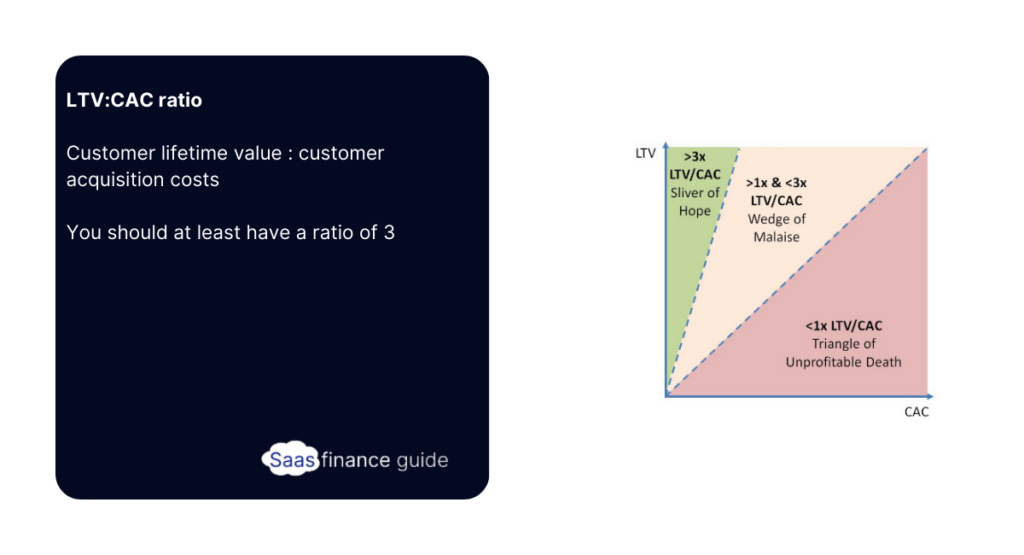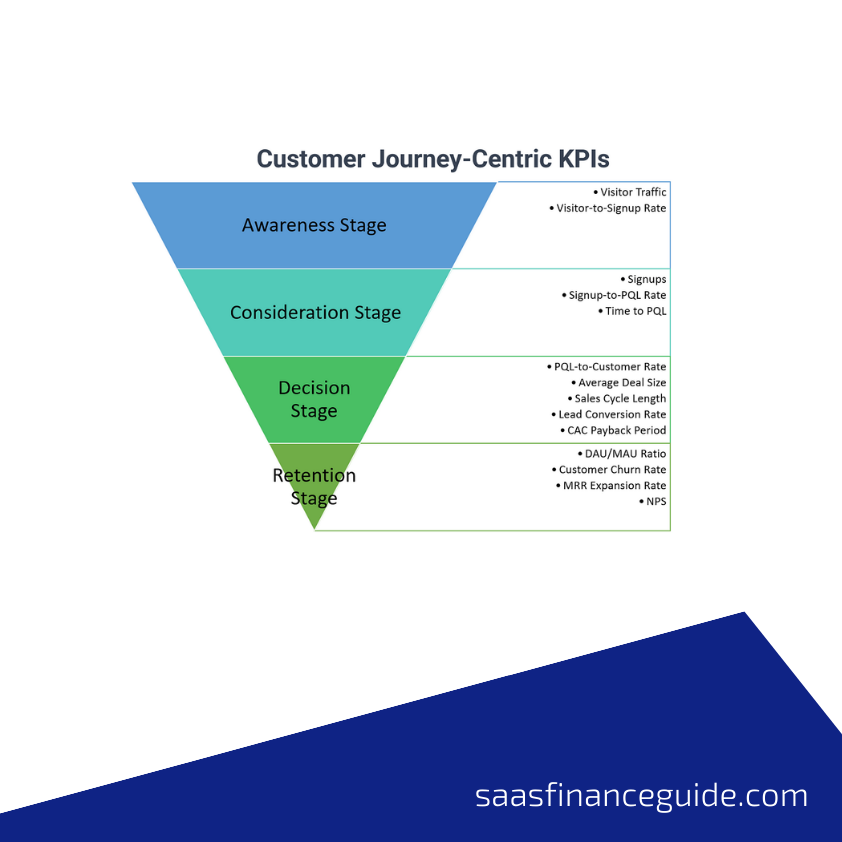Introduction
In the rapidly evolving world of B2B SaaS, understanding and leveraging marketing metrics is crucial. These metrics help businesses measure performance, optimize strategies, and achieve sustainable growth. By tracking the right metrics, companies can make data-driven decisions that lead to increased efficiency and profitability.
Key Performance Indicators (KPIs)
Overview of KPIs in B2B SaaS
KPIs are critical indicators that reflect the performance and health of a business. For B2B SaaS companies, KPIs include metrics that track customer acquisition, retention, revenue, and overall business growth. Understanding these indicators allows companies to align their strategies with business goals and market demands.
Customer Acquisition Cost (CAC)
Calculation and Significance
CAC measures the cost of acquiring a new customer. It includes all marketing and sales expenses divided by the number of new customers acquired. Lowering CAC is essential for improving profitability. By optimizing marketing campaigns and sales processes, businesses can reduce costs and increase customer acquisition efficiency.
Customer Lifetime Value (CLTV)
Importance and Computation
CLTV represents the total revenue a business can expect from a customer over their entire relationship. Calculating CLTV involves considering the average purchase value, purchase frequency, and customer lifespan. A higher CLTV indicates a more valuable customer base, guiding businesses to invest in retention strategies.

Monthly Recurring Revenue (MRR)
Definition and Calculation
MRR is the predictable revenue a company expects to receive each month from subscriptions. It’s calculated by multiplying the number of subscribers by the average revenue per user (ARPU). Monitoring MRR helps businesses forecast growth and make informed financial decisions.
Annual Recurring Revenue (ARR)
Importance and Computation
ARR is the annualized version of MRR, providing a longer-term view of recurring revenue. It’s crucial for understanding the stability and sustainability of a SaaS business. ARR helps in strategic planning and assessing the long-term viability of business models.
Churn Rate
Types of Churn and How to Measure
Churn rate indicates the percentage of customers who cancel their subscriptions over a given period. There are two types: customer churn and revenue churn. Reducing churn involves improving customer satisfaction, offering competitive features, and delivering exceptional customer service.
Net Promoter Score (NPS)
Overview and Impact on Growth
NPS measures customer loyalty and satisfaction by asking customers how likely they are to recommend the company to others. A high NPS indicates strong customer advocacy, which can drive growth through word-of-mouth referrals. Companies should use NPS feedback to enhance their offerings.
Customer Retention Rate
Strategies for Improvement
Customer retention rate is the percentage of customers who continue using a service over time. Retaining customers is more cost-effective than acquiring new ones. Strategies for improving retention include personalized communication, loyalty programs, and continuous product enhancements.
Lead Conversion Rate
Definition and Optimization
Lead conversion rate is the percentage of leads that convert into paying customers. Improving this metric involves optimizing marketing funnels, refining sales tactics, and ensuring that leads receive appropriate follow-ups and nurturing.
Sales Cycle Length
Measurement and Reduction
Sales cycle length is the time it takes from initial contact with a prospect to closing a deal. Shortening the sales cycle can lead to quicker revenue generation. This can be achieved by streamlining processes, training sales teams, and using automation tools.
Average Revenue Per User (ARPU)
Calculation and Relevance
ARPU measures the average revenue generated per user. It helps businesses understand their revenue streams and identify opportunities for upselling and cross-selling. Increasing ARPU involves enhancing product offerings and value propositions.
Customer Engagement Metrics
Types and Tracking
Customer engagement metrics track how actively customers interact with a product. These include login frequency, feature usage, and support interactions. High engagement often correlates with lower churn and higher customer satisfaction.
Trial-to-Paid Conversion Rate
Importance and Enhancement
This metric measures the percentage of trial users who become paying customers. Improving this rate involves optimizing the onboarding process, providing valuable trial experiences, and demonstrating the product’s value early.
Revenue Growth Rate
Analysis and Maximization
Revenue growth rate indicates the increase in revenue over a specific period. Analyzing this metric helps businesses understand growth trends and identify areas for improvement. Strategies to maximize growth include expanding market reach, innovating products, and enhancing sales strategies.
Benchmarking and Comparison
Industry Standards and Goals
Benchmarking involves comparing business metrics against industry standards. This helps identify strengths and weaknesses, set realistic goals, and develop competitive strategies. Regular benchmarking ensures that a business remains competitive and on track to achieve its objectives.
Using Analytics Tools
Best Tools for Tracking Metrics
Numerous analytics tools can help B2B SaaS companies track and analyze marketing metrics. Popular tools include Google Analytics, Mixpanel, and HubSpot. These tools offer insights into customer behavior, campaign performance, and overall business health.
Conclusion
Summary and Future Trends
In conclusion, understanding and leveraging B2B SaaS marketing metrics is vital for business success. By tracking key metrics such as CAC, CLTV, MRR, and churn rate, companies can make informed decisions and drive growth. As the SaaS landscape evolves, staying updated with the latest trends and continuously optimizing strategies will ensure sustained success.
Frequently Asked Questions (FAQs)
- What are B2B SaaS marketing metrics?
- B2B SaaS marketing metrics are measurements used to track and analyze the performance and health of B2B SaaS companies. They help in making data-driven decisions to optimize marketing strategies and achieve business goals.
- Why is Customer Acquisition Cost (CAC) important?
- CAC is important because it measures the cost of acquiring new customers. Lowering CAC improves profitability and helps businesses allocate resources more efficiently.
- How do you calculate Customer Lifetime Value (CLTV)?
- CLTV is calculated by multiplying the average purchase value, purchase frequency, and customer lifespan. It represents the total revenue a business can expect from a customer over their entire relationship.
- What is the difference between MRR and ARR?
- MRR (Monthly Recurring Revenue) is the predictable revenue expected each month from subscriptions, while ARR (Annual Recurring Revenue) is the annualized version, providing a longer-term view of recurring revenue.
- How can companies reduce churn rate?
- Companies can reduce churn rate by improving customer satisfaction, offering competitive features, providing exceptional customer service, and using feedback to enhance products and services.
- What tools are best for tracking B2B SaaS marketing metrics?
- Popular tools for tracking B2B SaaS marketing metrics include Google Analytics, Mixpanel, and HubSpot. These tools provide insights into customer behavior, campaign performance, and overall business health.
